1964’s Chart-topping hits people still listen to today
When people look back at the biggest hits of a long bygone year, they tend to find more songs they don’t remember than they might expect. Just because everyone was talking about a song at the time, that doesn’t always mean it made a lasting impact.
However, some years are blessed with so much timeless music that it doesn’t matter how far in the past they are. With the rise of the British Invasion and the ferocity of Americans trying to compete with these hot new acts on their turf, 1964 was destined to become one of those classic years.
The Beatles – “I Want To Hold Your Hand”
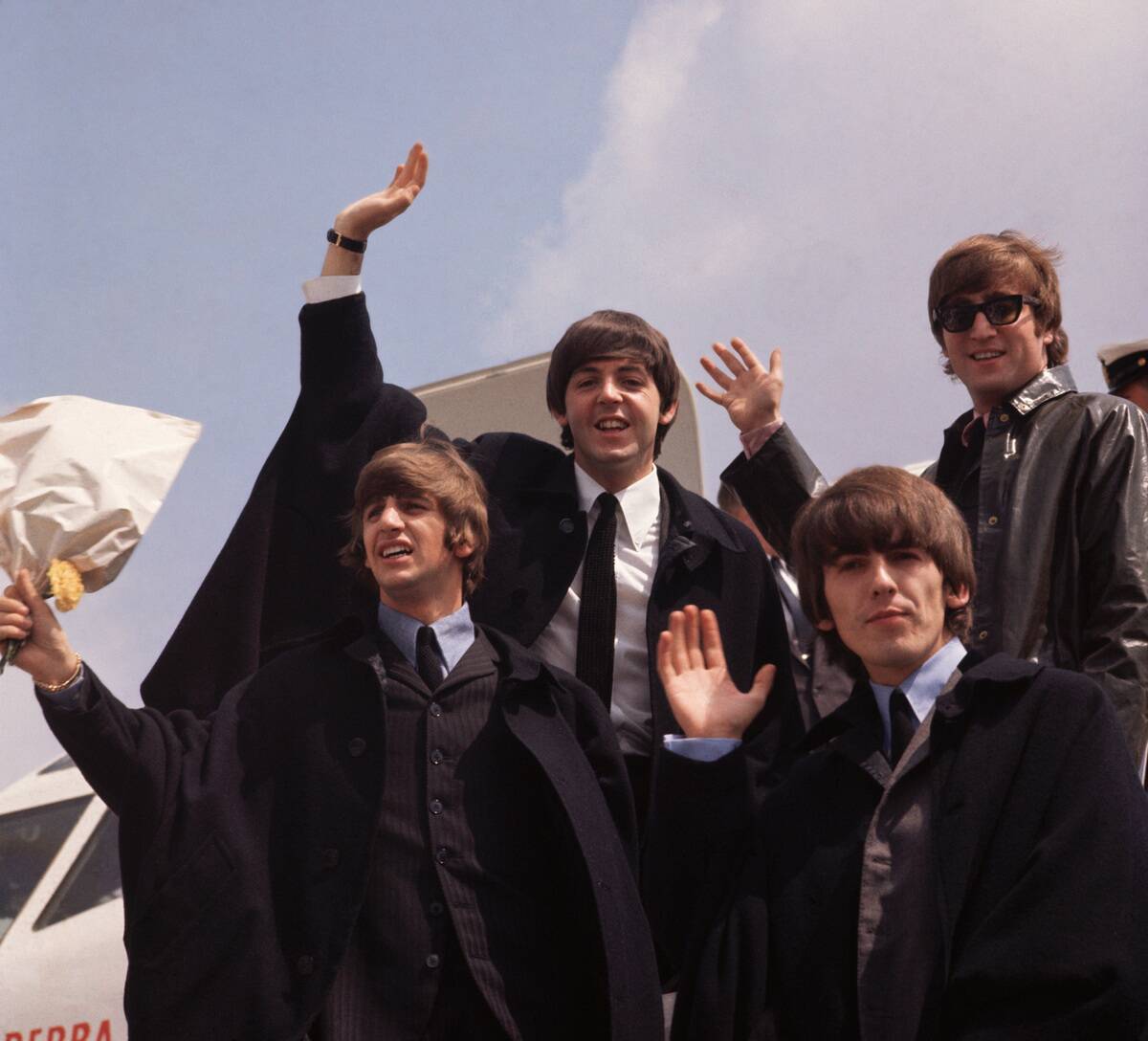
Considering how hotly anticipated the arrival of The Beatles to American soil was by the time they touched down on February 7, 1964, it stood to reason that many of the biggest hits of the year would be theirs.
Another reason for this concerned the fact that all the music they had made up to that point was getting released in America practically at once. So fans had every opportunity in the world to indulge in their Beatlemania. And it seems that the idea of holding hands with a Beatle was so irresistible to their screaming, adolescent fanbase that “I Want To Hold your Hand” went to number one for seven weeks, thus making it the biggest hit of 1964.
The Beatles – “She Loves You”
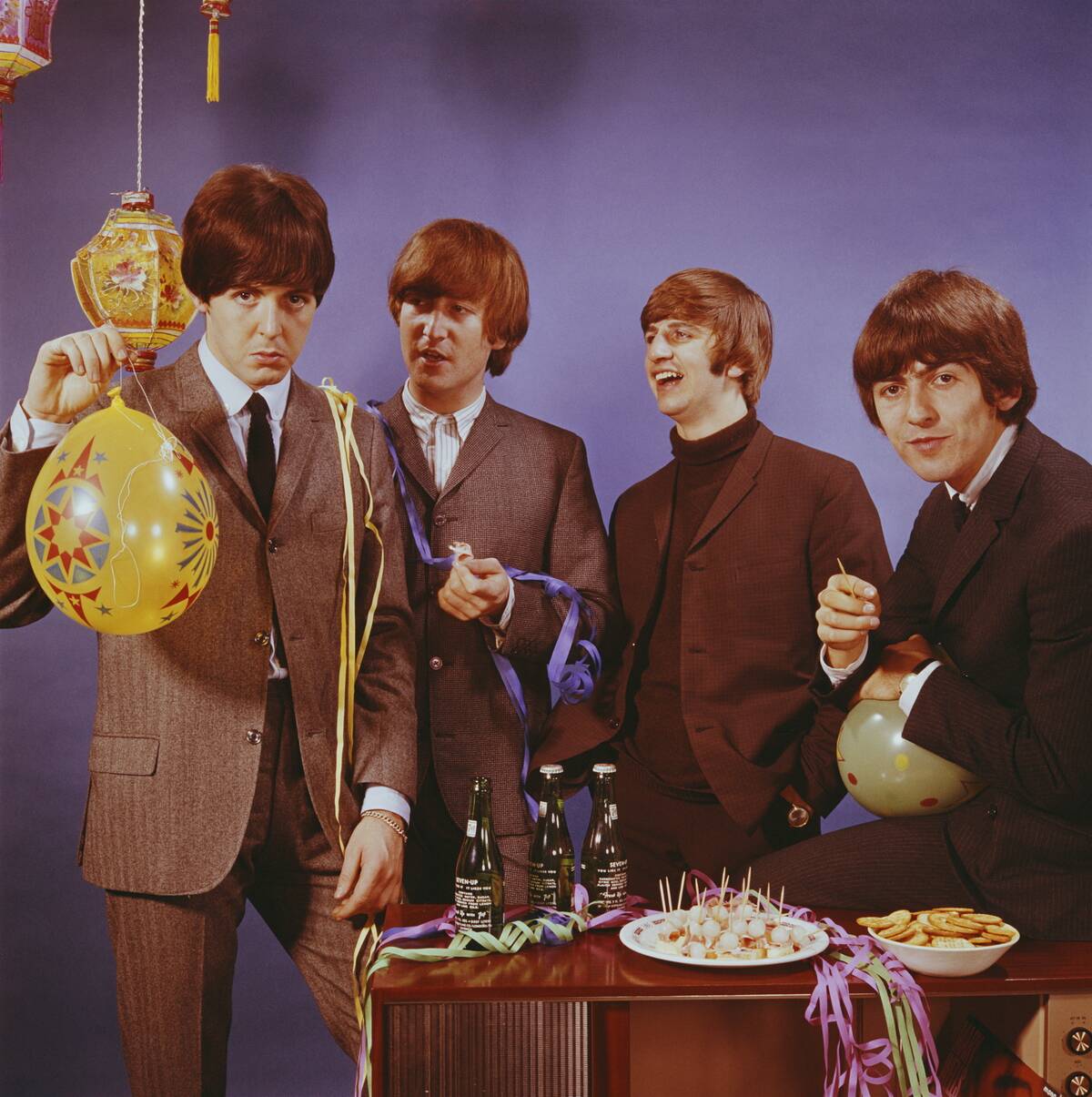
A little faster and louder than “I Want To Hold Your Hand,” “She Loves You” presented the second wing of a clever two-pronged campaign for the hearts of American youth. While one could argue that the screaming girls were the band’s bread and butter in their early years, The Beatles clearly wanted as many male fans as female ones.
Thus, while “I Want To Hold Your Hand” was written with girls in mind, “She Loves You” is directly addressing their boyfriends instead. Indeed, it seemed this strategy and the raucous atmosphere surrounding it paid off, as “She Loves You” was right there to fill the number one spot after people started to get sick of “I Want To Hold Your Hand.” It would stay there for two weeks, marking one of the only times an artist’s first charting singles secured consecutive number-one position.
Louis Armstrong – “Hello, Dolly!”

While 1964 was practically defined by the British Invasion, it was also a big time for jazz and the biggest year for one of its most venerated masters, Louis Armstrong. That’s because it was the year in which he achieved his only number-one hit.
Although “Hello, Dolly” only spent a week at number one, the fact that Armstrong was able to get there at all and notch one of the biggest hits of 1964 in a year all but ruled by The Beatles speaks to how much this song wowed the record-buying public.
Roy Orbison – “Oh, Pretty Woman”
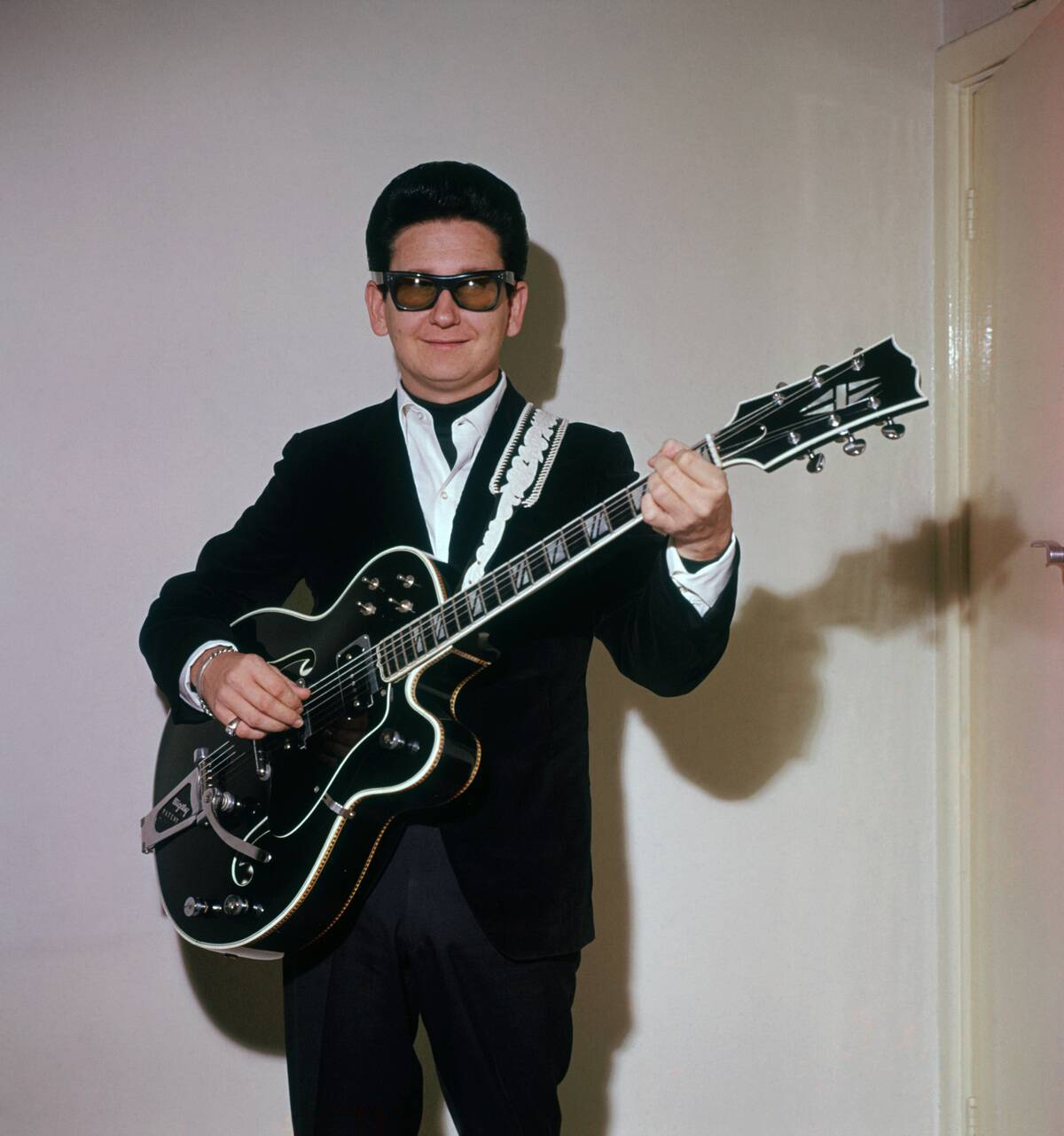
Whether they were British or American, 1964 was a staggeringly special year for how many legendary artists caught lightning in a bottle. Although Orbison’s powerful voice and adventurously grim songwriting had already made him deeply and widely respected by 1964, “Oh, Pretty Woman” was nonetheless the biggest hit of his career.
Orbison had a previous number-one hit in “Running Scared,” but only “Oh, Pretty Woman” stayed in that spot for three weeks. It stands to reason that this remains his most recognizable song over 60 years later, especially with the novel way its final stanzas progress.
The Beach Boys – “I Get Around”
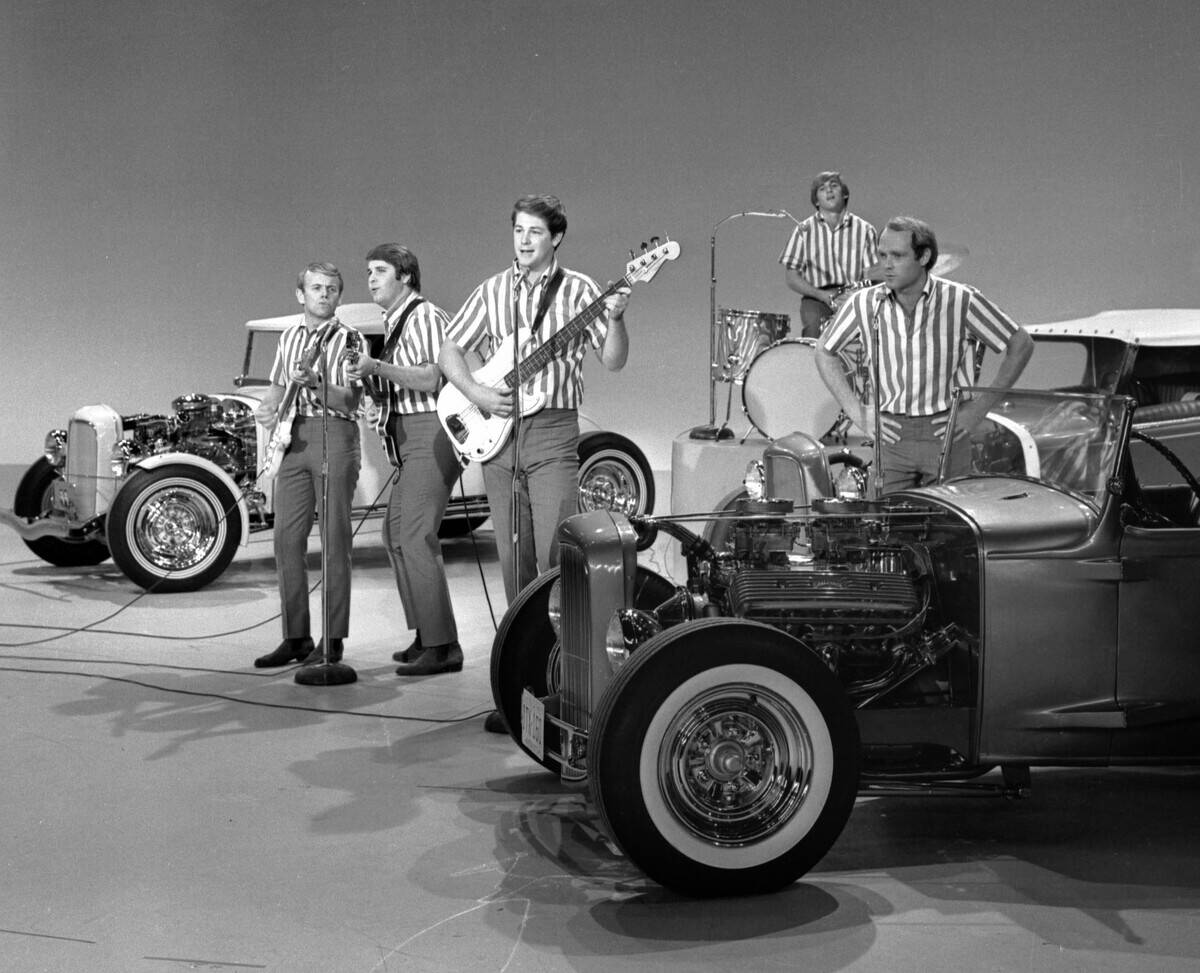
Although The Beach Boys would cement their status as “America’s band” over the course of decades, the fact that they were one of The Beatles’ most serious competitors surely helped that reputation flourish. If anything could go toe-to-toe with the songwriting prowess of Lennon and McCartney, it was the pop genius of Brian Wilson.
By 1964, that genius was already making itself apparent in the lush, dense sound, pitch-perfect harmonies, and immaculate production techniques behind classics like “All Summer Long” and the band’s biggest hit of the year, “I Get Around.” It was their first number-one single — topping the Billboard Hot 100 for two weeks — and the first American song to hit that pinnacle after the Beatles took over.
Dean Martin – “Everybody Loves Somebody”
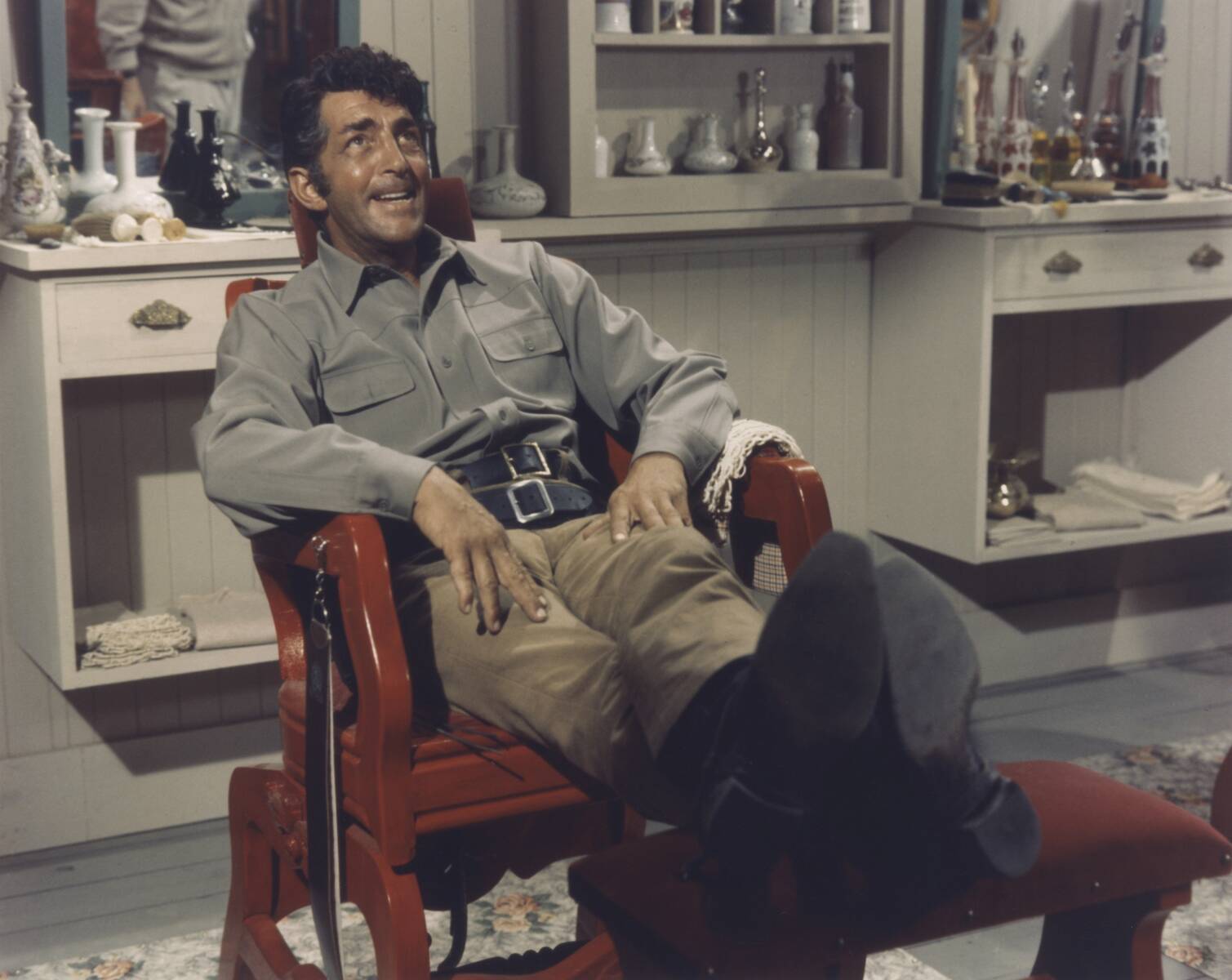
Although beloved Rat Pack member and “King of Cool” Dean Martin was enjoying an enviable career as a major recording artist and movie star by 1964, it’s nonetheless true that his second, number-one hit, “Everybody Loves Somebody,” was an improbable one.
By that point, he hadn’t had a song crack the Top 40 since 1958, and nobody expected the year The Beatles took over to be when it happened again. But there was something magic in the air that year, and Martin seemed to know it because when his son expressed his Beatles fandom, Martin’s response was, “I’m gonna knock your pallies off the charts.” Sure enough, “Everybody Loves Somebody” did exactly that when it hit number one on August 15, 1964.
Mary Wells – “My Guy”
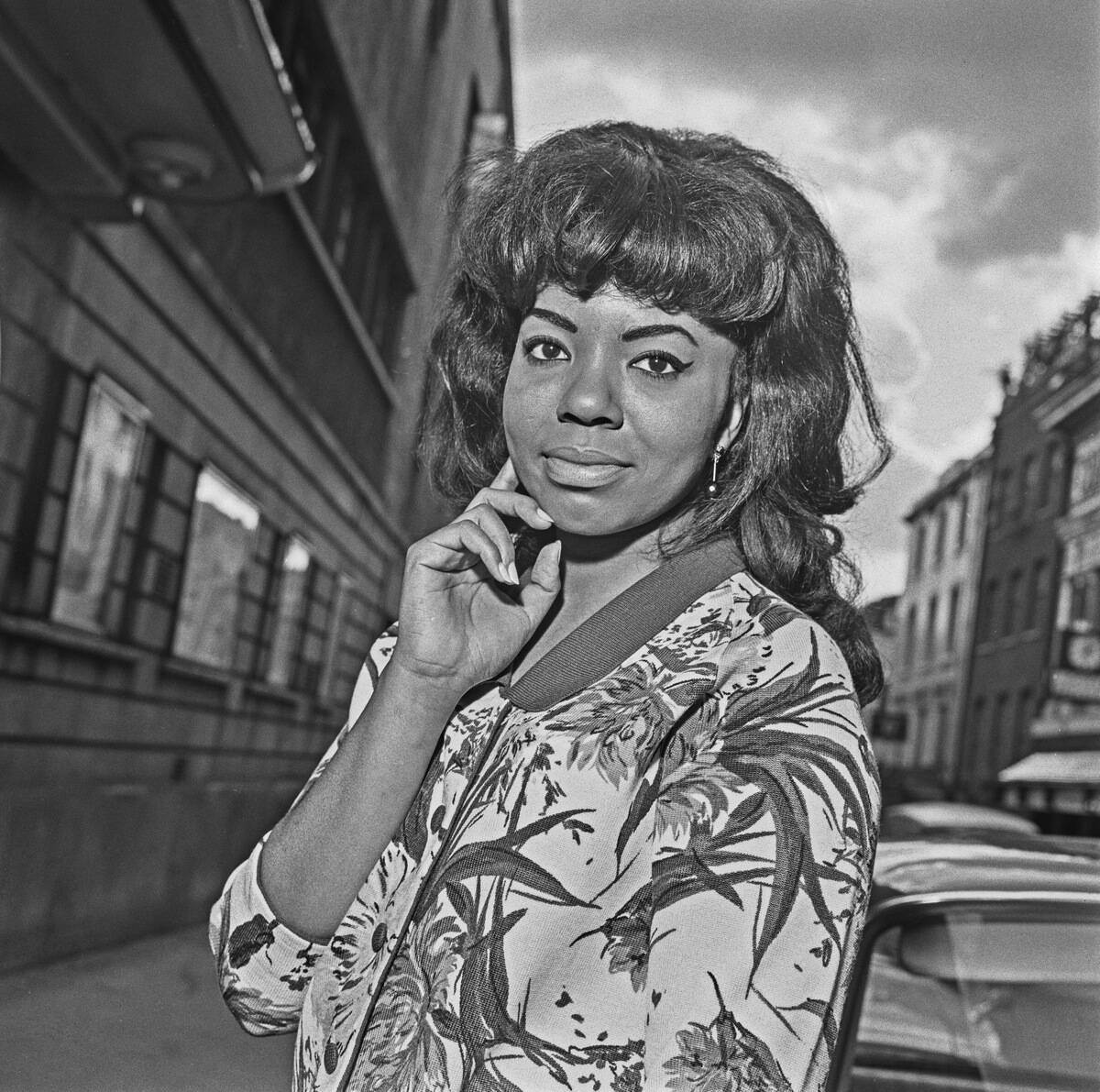
As if there wasn’t enough excitement happening in the music industry in 1964, the momentum of Motown’s rise was in full swing by that point. After The Marvelettes and “Little” Stevie Wonder had secured number-one hits for the fledgling record label in previous years, Mary Wells continued the streak on May 16, when her song “My Guy” hit number one.
Although she intended the sultry Mae West voice she recorded the song in as a joke, Smokey Robinson and the song’s other producers encouraged her to keep going. Although “My Guy” was her shining moment that Wells thought would lead to bigger opportunities after she signed with 20th Century Fox, she would never have another hit.
Gale Garnett – “We’ll Sing In The Sunshine”
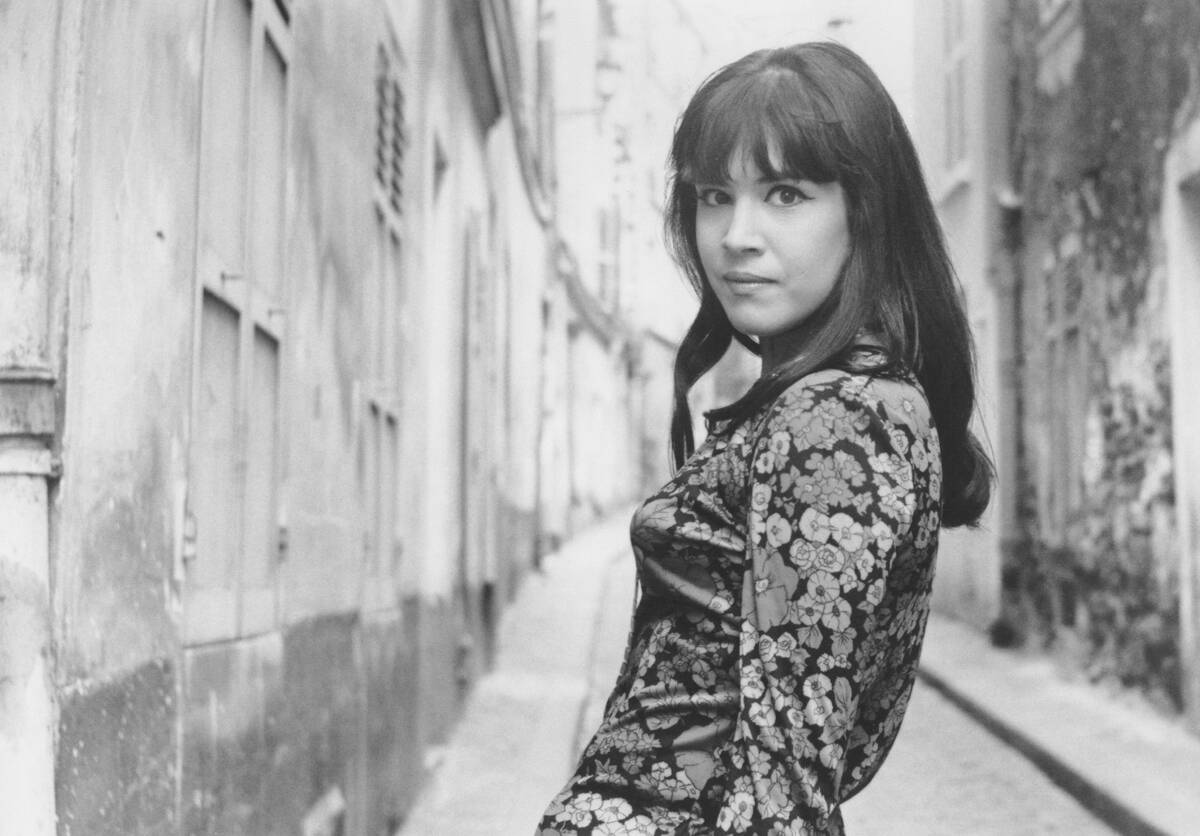
Born in New Zealand and raised in Canada, Gale Garnett crafted a staple of easy-listening radio for decades to come with her bittersweet folk song, “We’ll Sing In The Sunshine.” It’s about a girl who limits her relationship with her lover to a year due to an aversion to long-term relationships, but who will always remember that year fondly.
Although the song hit number one in Garnett’s native New Zealand, number two in Canada, and topped Billboard’s former Cash Box chart, it seemed “We’ll Sing In The Sunshine” attracted more record sales than airplay because it reached number four on the Billboard Hot 100. Garnett would not have another single make the Top 40 in the United States.
J. Frank Wilson and the Cavaliers – “Last Kiss”
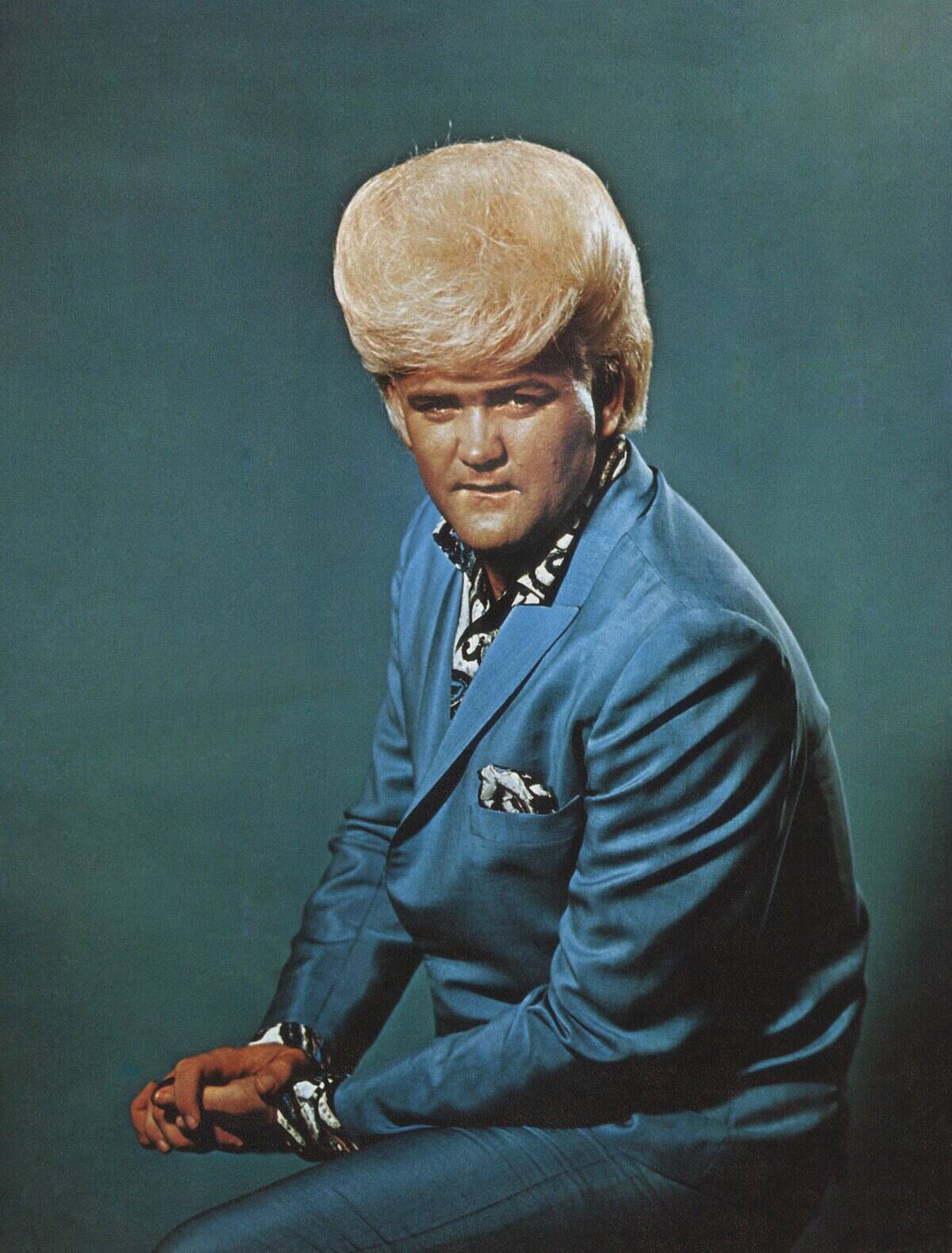
Although the tragic love song “Last Kiss” was written in 1961 by Wayne Cochrane (pictured), it wasn’t until September 5, 1964, that a cover version by J. Frank Wilson and the Cavaliers actually made it onto the Billboard Hot 100. Moreover, the song did well enough to make it to number two on the Billboard Hot 100 while topping the Cash Box chart.
Clearly, the band had cottoned on to the fact that a reliable way to get a hit between the mid-60s and 1974 was to record a song that told a story, particularly one about teenagers who experience devastating tragedies. However, it seems they weren’t aware of a more universal truism: Bands who score their first hit with a cover often don’t get another one.
The Supremes – “Where Did Our Love Go?”
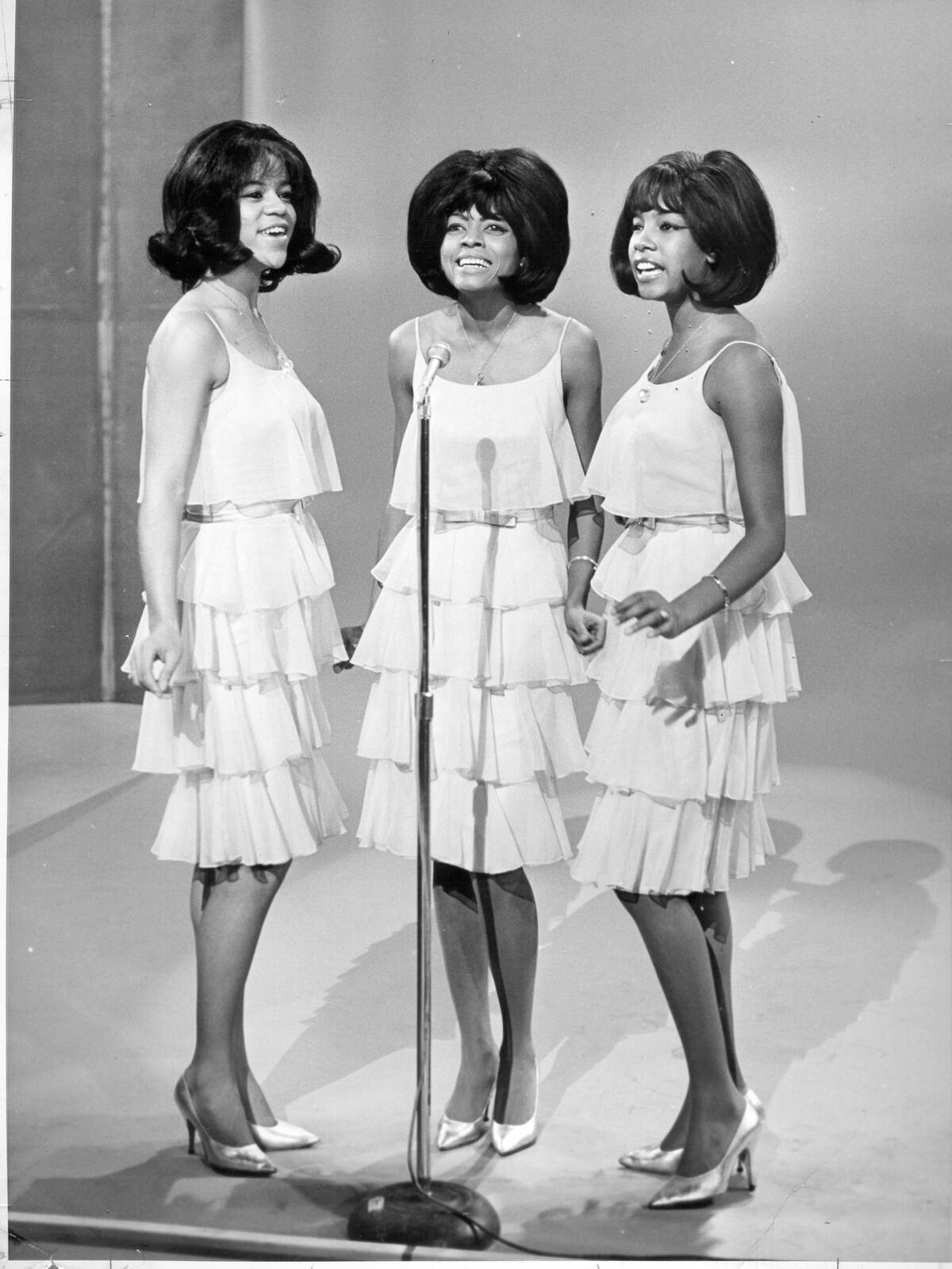
Throughout their legendary run, The Supremes would become one of the most reliable hitmakers for Motown, notching a staggering 12 number-one hits throughout the 1960s. Moreover, the group achieved three number-one hits in 1964 alone.
Yet, while “Baby Love” would stay at that spot the longest for the longest, “Where Did Our Love Go?” was still considered the bigger hit by the time Billboard tabulated their year-end list for 1964. Whether that was due to record sales that outperformed the song’s respective levels of airplay or just because it was their first number-one hit, “Where Did Our Love Go?” was nonetheless the start of a golden age for The Supremes.
Barbra Streisand – “People”
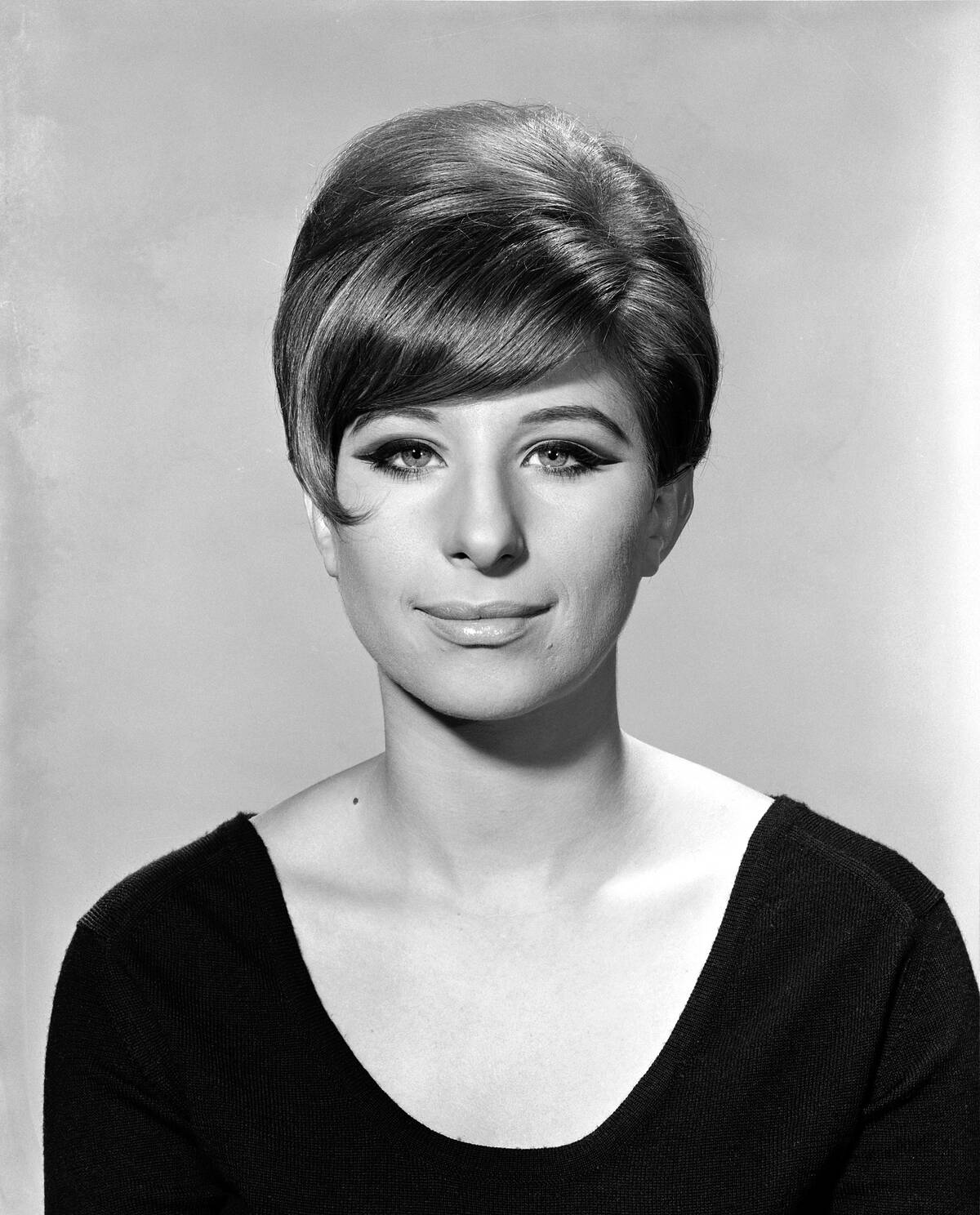
By the time the ’60s were over, Barbra Streisand would be well on her way to becoming a major movie star and would only be a few years away from the first of her five number-one hits. However, it’s unlikely she would have been in that position at all had it not been for one hit that would become one of her signature songs.
This was “People,” a tender ballad that began life as part of the soundtrack of the Broadway musical that first elevated Streisand to fame, Funny Girl. Indeed, her successful film career started with the film adaptation of this show. “People” would eventually peak at number five on the Billboard Hot 100.
Al Hirt – “Java”
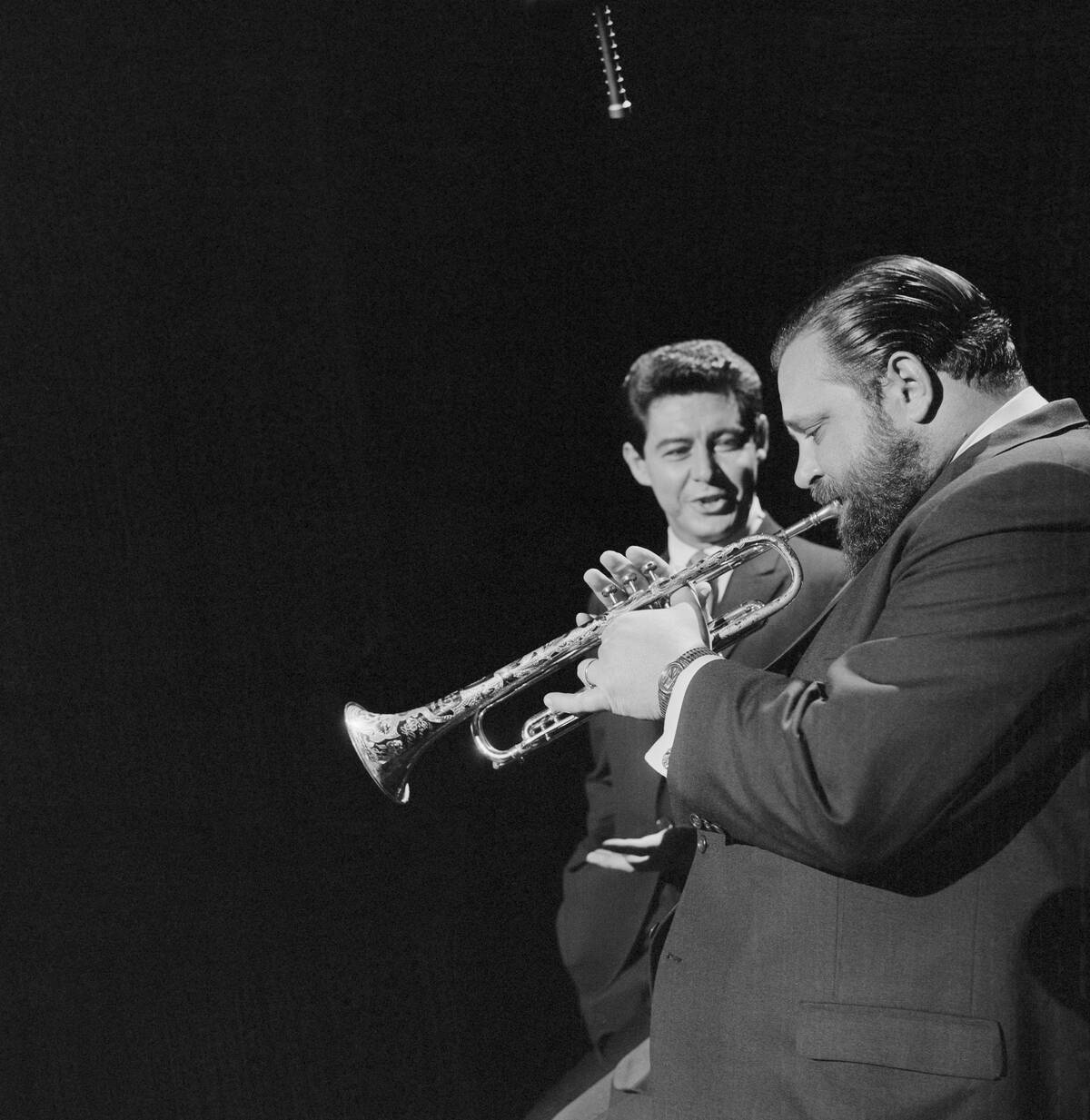
Although it certainly happens from time to time, an instrumental track nonetheless has to be something special to perform well on the Billboard Hot 100. And in the case of Al Hirt’s version of “Java,” the appeal was clearly the opportunity to get a taste of the cool jazz scene down in New Orleans.
“Java” is less than two minutes long, but that was clearly long enough for Hirt’s trumpet skills to dazzle the public, as the Big Easy jazz man would see this single make it to number four on the Billboard Hot 100 and top the Billboard Adult Contemporary chart for four weeks. It also won Hirt a Grammy.
The Beatles – “A Hard Day’s Night”

Although practically every Beatles single could be considered the hot new song when their releases started hitting American soil in 1964, “A Hard Day’s Night” was better recognized in the U.K. as their most recent cause for excitement.
That said, the song stood out in the United States not just for its catchy tune and clever title, but also for the fact that it was the title track of their first major film project. The film A Hard Day’s Night would be nominated for two Oscars, and the single and album of the same name would set a record for simultaneously topping the Billboard Hot 100 and the organization’s album chart.
The Beatles – “Love Me Do”
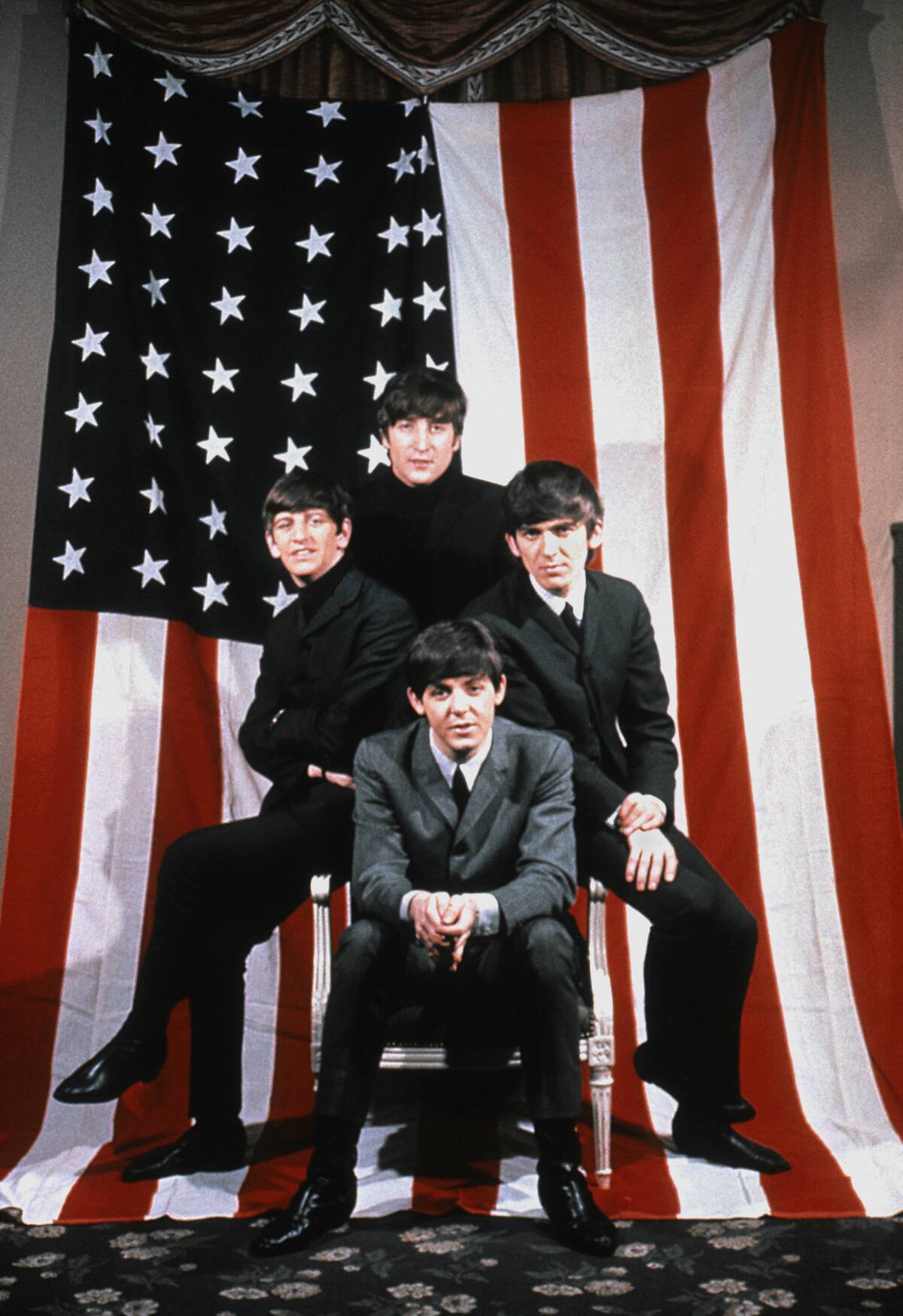
Although “Love Me Do” performed impressively in the U.K. when it was released as their first single in 1962, there was obviously far more momentum behind the harmonica-based love song by the time it saw its American release on April 27, 1964.
While “Love Me Do” would top the Billboard Hot 100 and Cash Box charts, it’s also a staggering part of music history in that it was part of an all-time record on the American charts. That’s because it was one of seven Beatles songs to hit number one in 1964 alone.
Manfred Mann – “Do Wah Diddy Diddy”

Confusingly named after their keyboardist, Manfred Mann’s Earth Band is best known in modern times for their cover of the Bruce Springsteen song “Blinded By The Light.” However, not only was that not their first number-one hit, but they had achieved that accolade over a decade earlier.
Once again, that was for a cover, this time of the classic ’60s pop tune “Do Wah Diddy Diddy.” Yet, while the song was recorded by The Exciters a year prior, it was Manfred Mann’s version that would end up blowing all the way past the other band’s performance to number one. The song would hold that position for two weeks.
The Beatles – “Please Please Me”
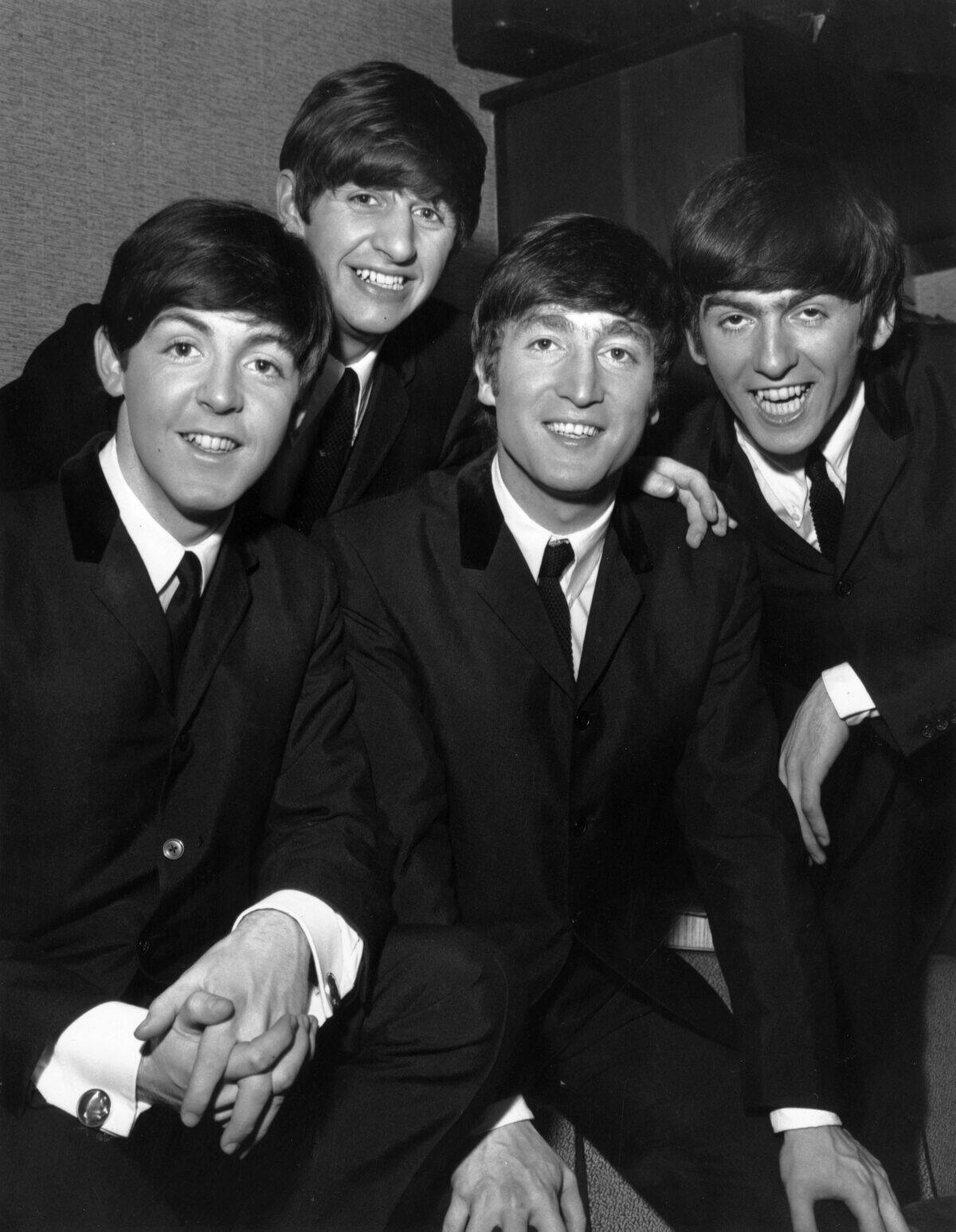
In yet another example of everything The Beatles had released up to that point dominating the American charts in 1964, “Please Please Me” reached number three on the Billboard Hot 100 after its release on January 3, 1964. However, that wasn’t the first time the Fab Four’s early single had hit American shores.
As it turned out, it was the first single they released in the United States (and the second of their careers) but in February of 1963, there wasn’t enough stateside interest in the band to drive “Please Please Me” anywhere. Naturally, that changed with the advent of Beatlemania.
Martha and the Vandellas – “Dancing In The Street”

While “Dancing In The Street” remains a beloved Motown classic, Martha and the Vandellas lead singer Martha Reeves initially thought it was too repetitive when Marvin Gaye and William Stevenson wrote it. After it was punched up by Ivy Jo Hunter, Reeves further suggested that rather than sing it with the intimate vibe Gaye envisioned, she would treat “Dancing In The Street” like something that belonged at a block party or Mardi Gras.
Reeves’s instincts turned out to serve her well, as the song would reach number two on the Billboard Hot 100. It would also be covered seven times in prominent contexts between 1965 and 2001.
Billy J. Kramer & The Dakotas – “Little Children”
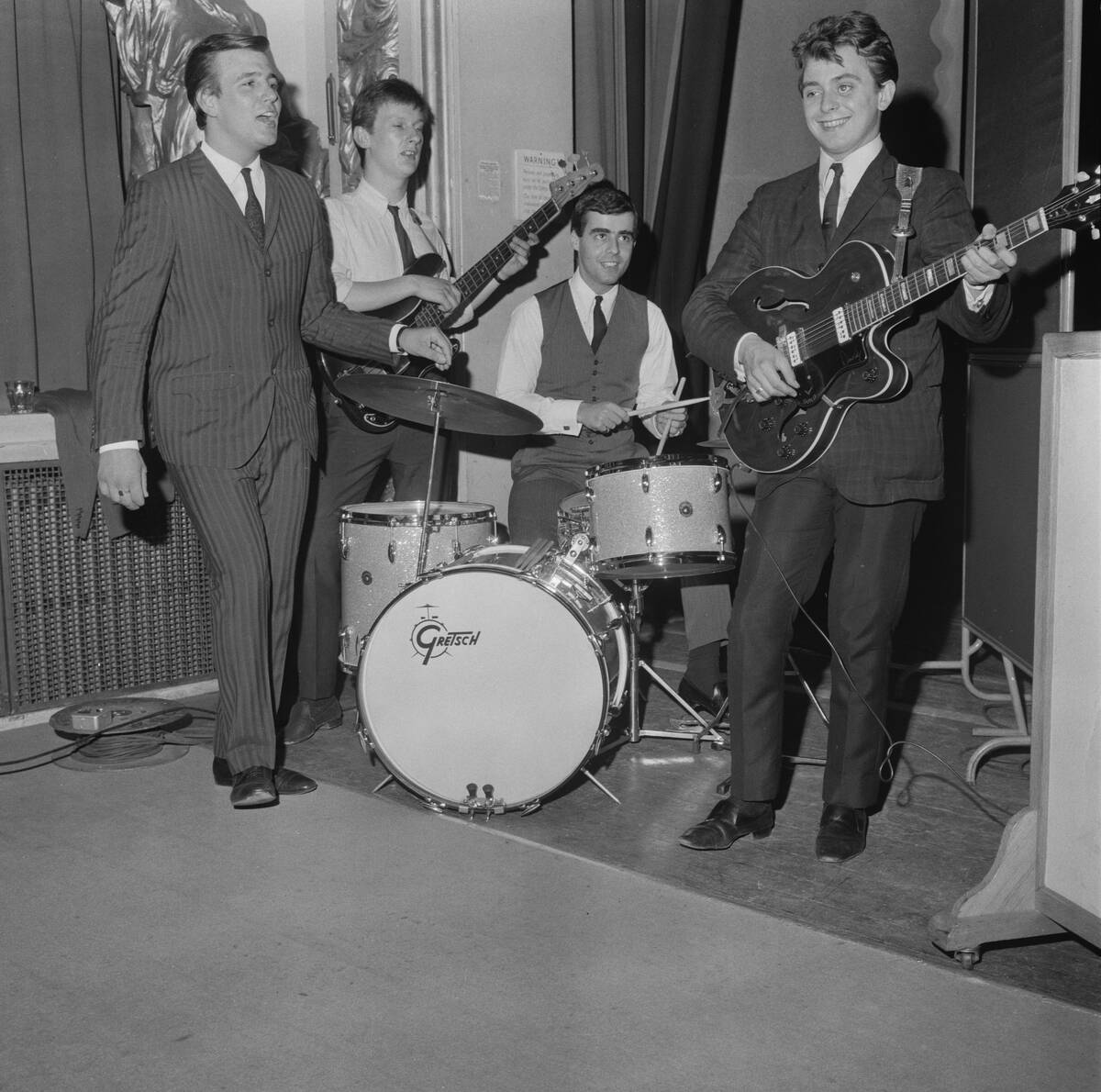
Although Billy J. Kramer and the Dakotas didn’t quite have the staying power enjoyed by other British Invasion acts, they could nonetheless say they had direct access to John Lennon and Paul McCartney’s songwriting talents. That’s because both the Dakotas and The Beatles were managed by Brian Epstein.
However, Epstein offered the group the Lennon/McCartney composition “One and One Is Two,” Kramer’s instincts led him elsewhere for the band’s next single. Instead, they chose “Little Children,” a song about a teen bribing his girlfriend’s younger siblings with candy and money to keep their relationship under wraps and respect their privacy. The move paid off, as the single reached number seven in the United States and number one in the United Kingdom.
The Ray Charles Singers – “Love Me with All Your Heart (Cuando Calienta El Sol)”
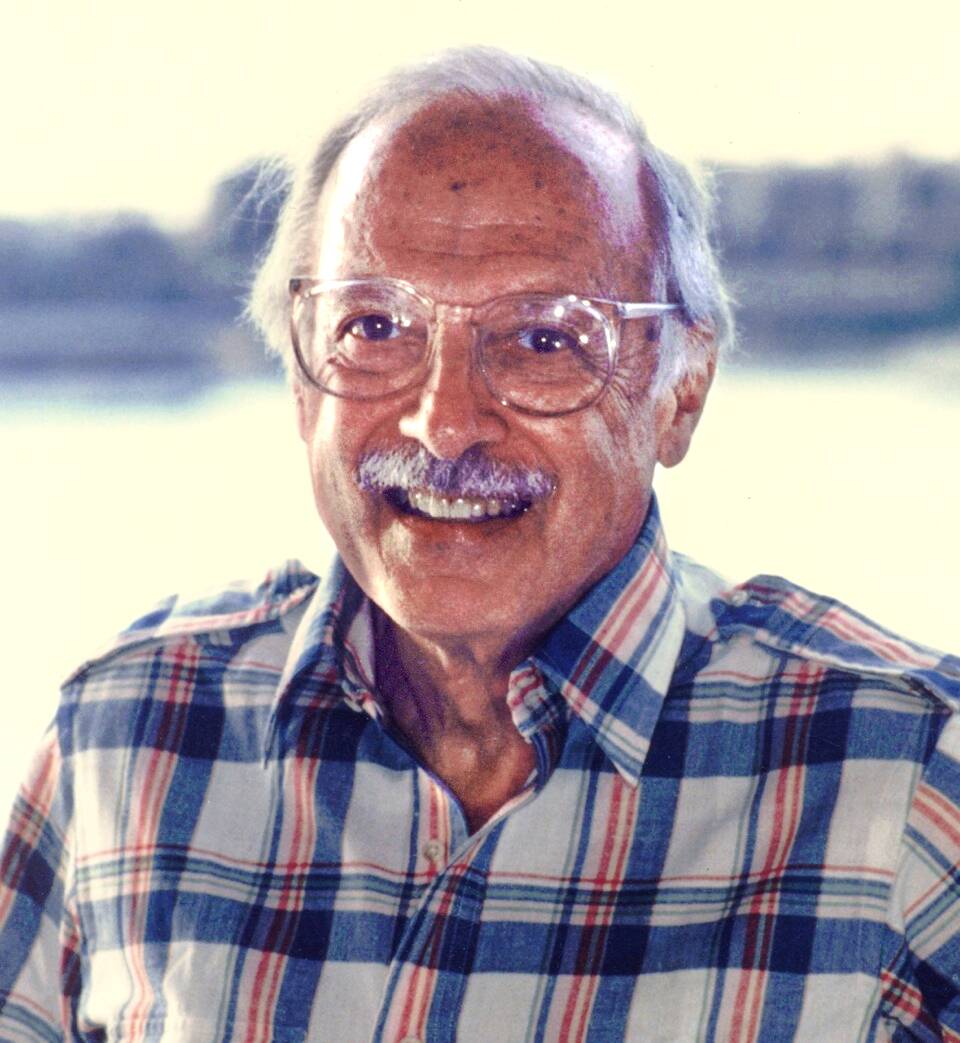
Although soul legend Ray Charles was certainly successful by 1964, he is not the Ray Charles behind this bilingual hit. Instead, the pictured Ray Charles was best known as the director of the Ray Charles Singers, who accompanied Perry Como on his television show and in his recordings over the course of 35 years.
“Love Me with All Your Heart” began life as “Cuando Calienta El Sol En Masachapa” before Spanish lyrics were added to make, “Cuando Calienta El Sol,” which was then translated into “Love Me with All Your Heart.” The version sung by the Ray Charles Singers — which reached number three on the Billboard Hot 100 — combined English verses with a Spanish chorus.
The Drifters – “Under The Boardwalk”
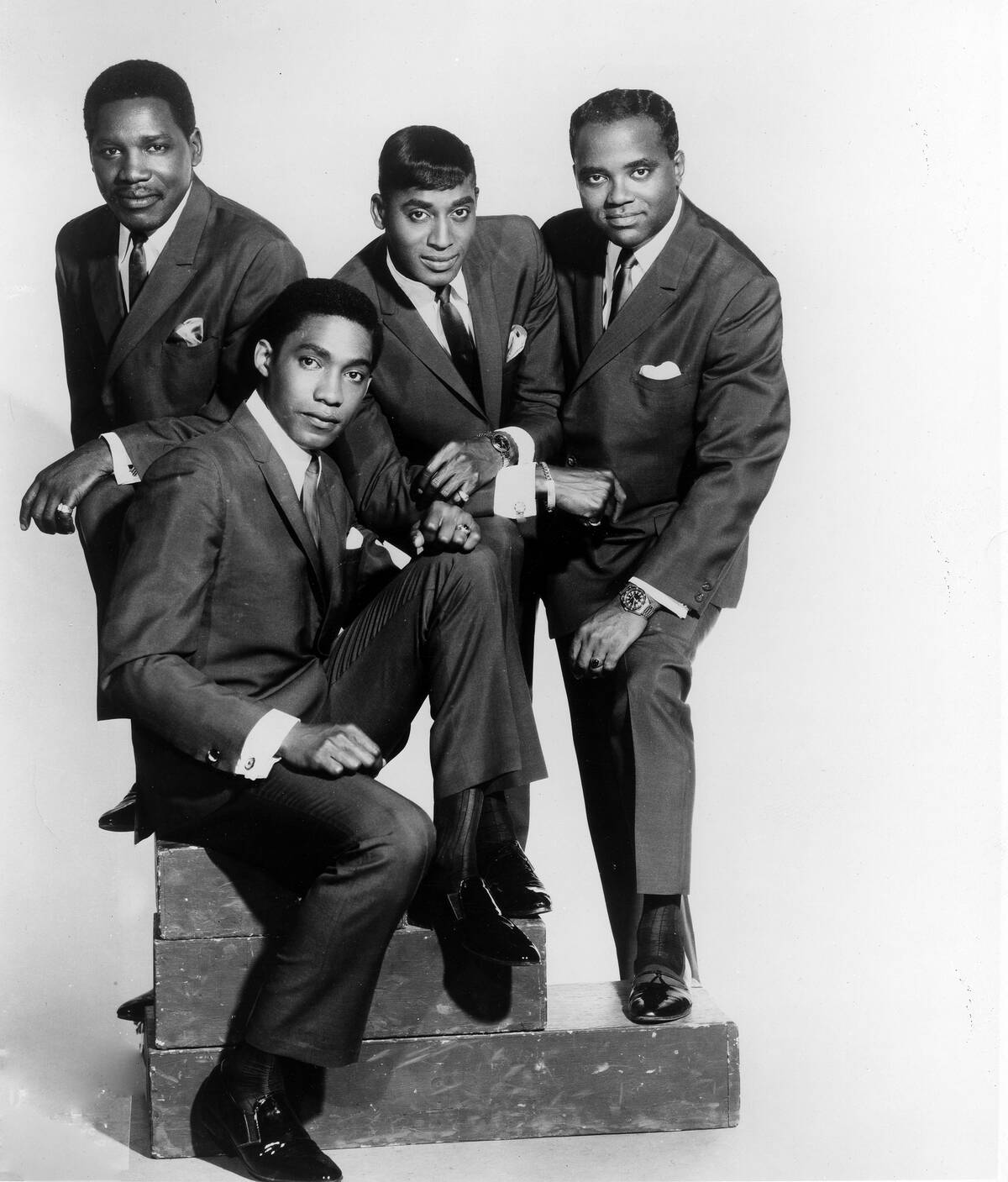
“Under The Boardwalk” remains a ’60s soul classic and an important part of The Drifters’ legacy, but it came to the R&B group at a tumultuous and tragic time in their careers. The night before The Drifters were supposed to record the song, Rudy Lewis — the lead singer who anchored the group after the departure of legendary singer Ben E. King in 1960 — passed away from an overdose.
While that would normally be a very good reason to cancel the studio session, The Drifters decided to soldier on with Johnny Moore (who had rejoined the group in 1963) taking on lead vocals. Although the aftermath was likely bittersweet at best for them, their adaptability was rewarded when “Under The Boardwalk” reached number four on the Billboard Hot 100.
The Dixie Cups – “Chapel of Love”
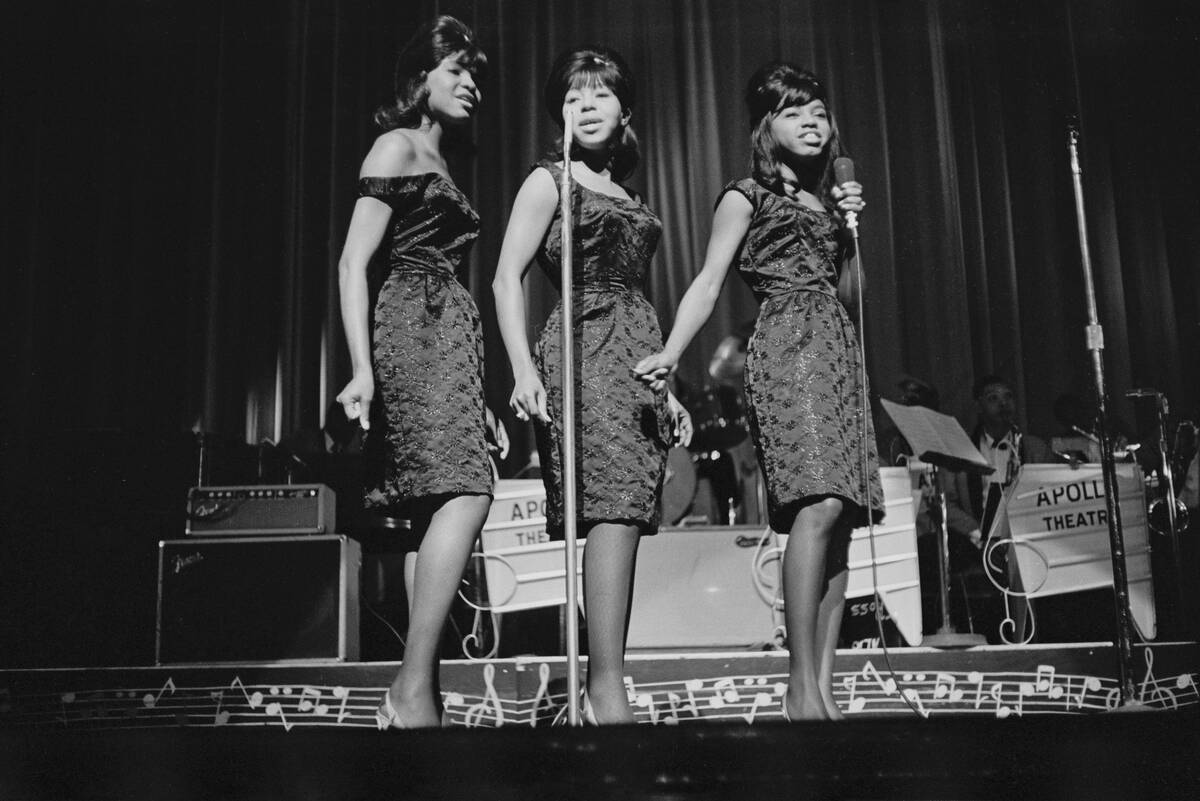
Known for its “Going to the chapel and we’re gonna get married” refrain, “Chapel of Love” was originally recorded by Darlene Love, but her version went unreleased for decades after failing to meet infamous songwriter and producer Phil Spector’s perfectionist standards. Although Spector would produce another version by The Ronettes, The Dixie Cups were able to swoop in and make it a hit first.
Although it was the group’s debut single, it seemed to put them on the map quickly, selling over a million copies and topping the Billboard Hot 100 for three weeks. This was already an impressive feat but it seems even more Herculean with the knowledge that “Chapel of Love” knocked The Beatles off the top of the chart.
Terry Stafford – “Suspicion”
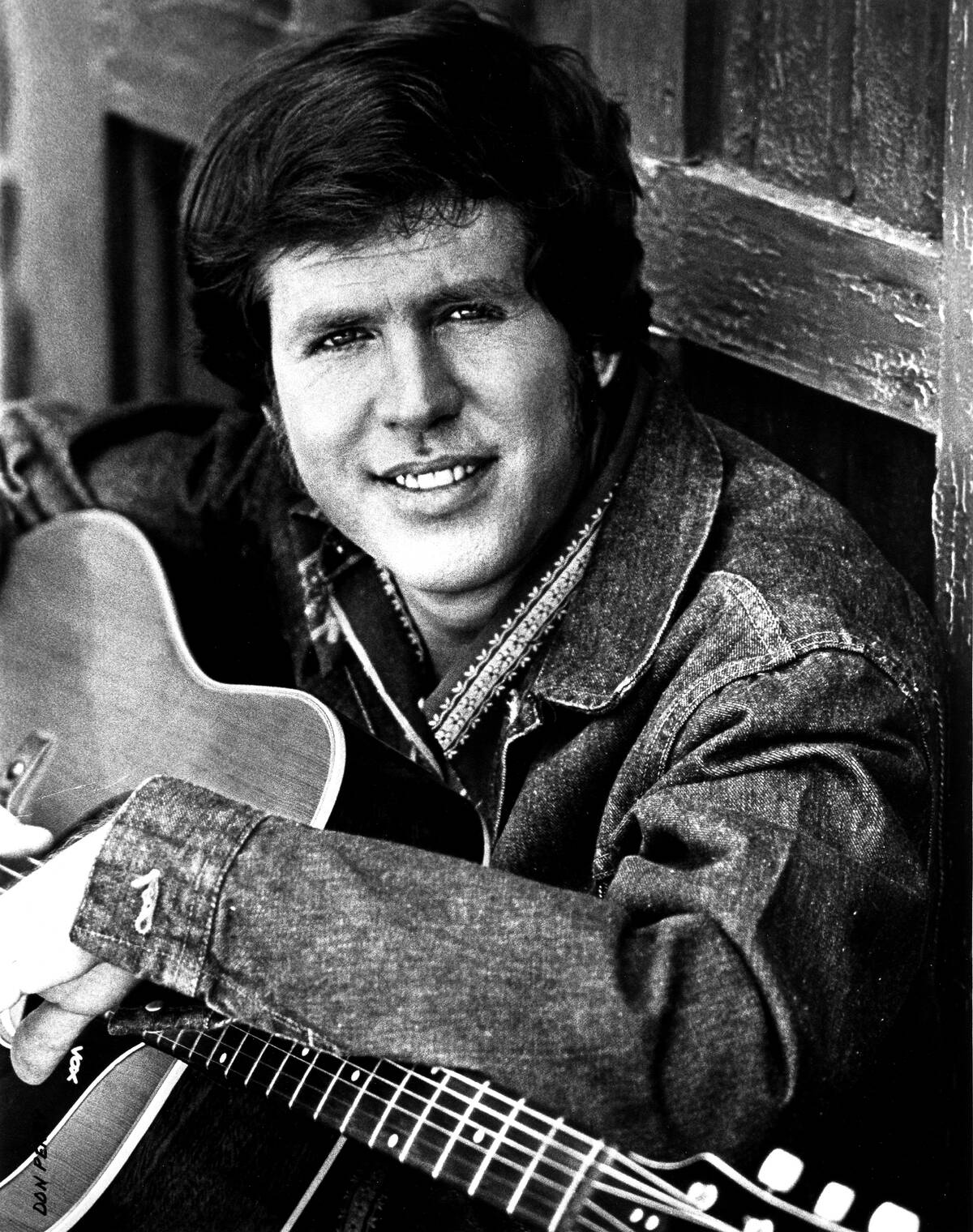
“Suspicion” was originally recorded by Elvis Presley in 1962 but his version didn’t reach the Billboard Hot 100, as radio stations and their listeners appeared to prefer the B-side, “Kiss Me Quick.” Let while that song reached number 34 at the time, “Suspicion” would improbably become an even bigger hit in different hands by 1964.
Although he was a songwriter in his own right Terry Stafford’s voice led him to be marketed as an Presley-sound alike. Ironically, that meant the record-buying public seemed to prefer “Suspicion” as sung by a man who sounded a lot like Elvis to the King himself, as Stafford’s version reached number three in the United States.
The Dave Clark Five – “Glad All Over”
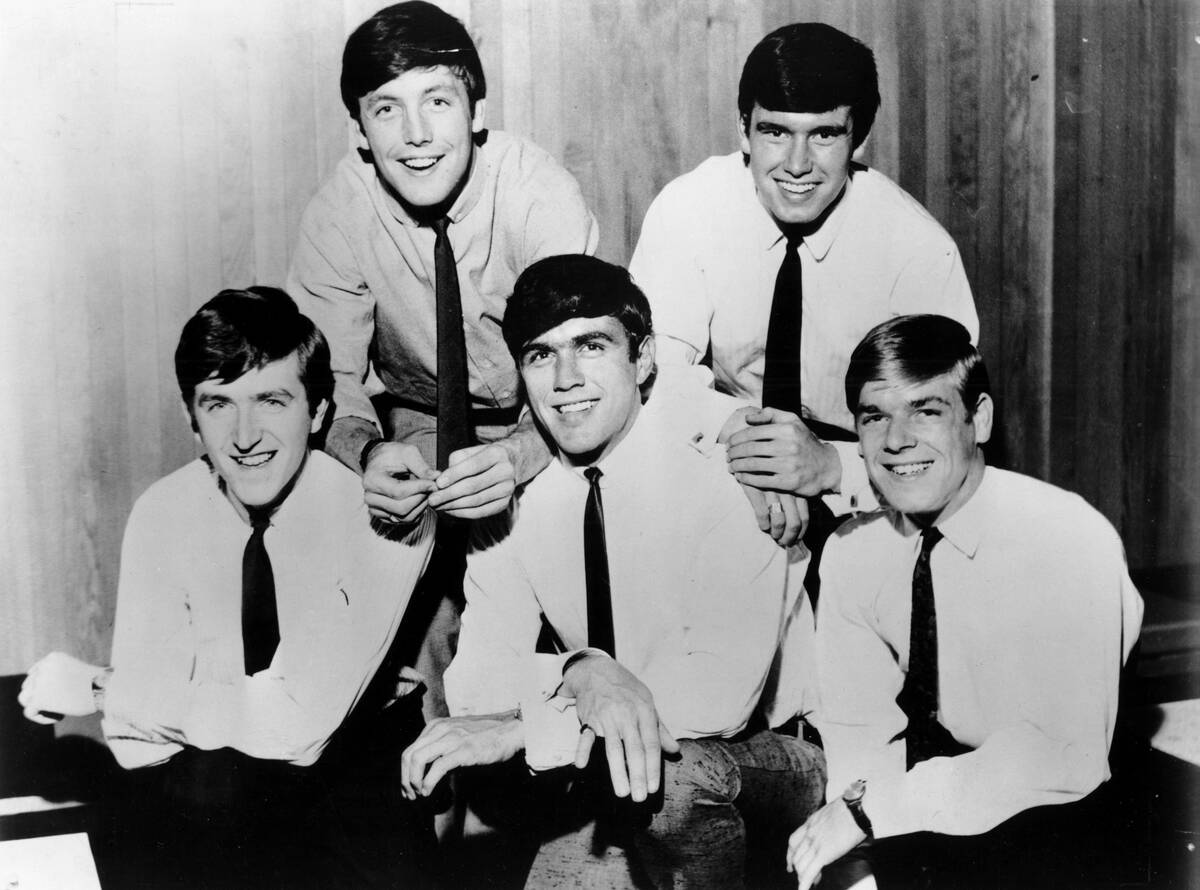
Although The Rolling Stones would prove a more enduring rival for The Beatles, The Dave Clark Five was one of the band’s earliest competitors and one of the first standard-bearers of the British Invasion. In the U.K., The Dave Clark Five made a serious mark with “Glad All Over,” which managed to unseat “I Want To Hold Your Hand” at the top of the chart and become the second-biggest single of the year besides The Beatles’ “Cant Buy Me Love.”
In the U.S., the band’s brief moment in the sun was similarly impactful, as The Dave Clark Five were among the first British Invasion acts to appear on The Ed Sullivan Show. Appropriately, “Glad All Over” also fared well stateside, reaching number six on the Billboard Hot 100 and number five on the organization’s now-defunct Cash Box chart.
The Four Seasons – “Rag Doll”

Although the Four Seasons’ keyboardist and most frequent songwriter, Bob Gaudio, worked “Rag Doll” into a slow love song, his inspiration came from a young, homeless girl who cleaned his car’s windshield for spare change. As the story goes, since he wasn’t carrying anything smaller than a ten-dollar bill, that’s what a he gave her.
Gaudio continued to think about the young woman, which is why “Rag Doll’s” lyrics concern a girl with hand-me-down clothes whose peers make fun of by calling her “rag doll.” Naturally, the protagonist loves her and wants to see her have a happier, moire prosperous life. The song resonated strongly with the public and topped the Billboard Hot 100 for two weeks.
The Four Seasons – “Dawn (Go Away)”
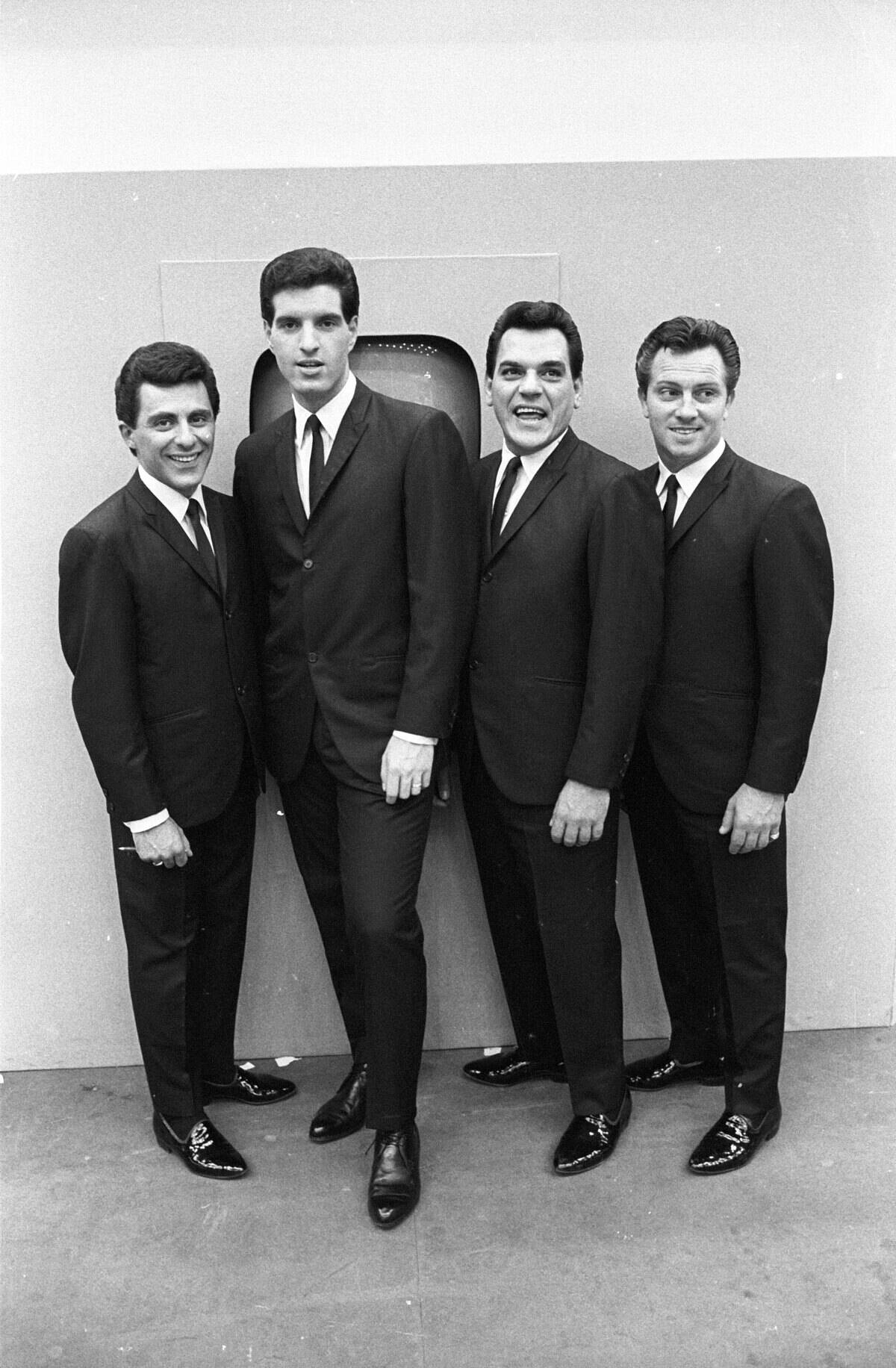
“Dawn” was written by Bob Gaudio and Sandy Linzer and depicts a heartbroken young man telling the titular woman he loves to go away because he feels unworthy of her affections compared to his rival. However, The Four Seasons had more going on in the background as the recorded it because they were involved in a royalty dispute with Vee Jay Records at the time.
Indeed, the song’s recording would deepen that dispute, as the band’s withholding of the master tapes from Vee Jay were considered a breach of contract by the label. Nonetheless, the Four Seasons released “Dawn” through Philips Records and became a serious hit once the smoke cleared, reaching number three on the Billboard Hot 100 and hovering there for three weeks.



